Coming of age rituals are an ancient and common human practice, present in many, if not all, cultures in some way or another. Romans would offer their bullas (protection necklaces given to them at birth) to the guardian deities and embrace becoming official citizens of Rome between ages 14 and 17. Spartans underwent the krypteia, a year-long test in which they had to survive by themselves in the wilderness in order to be considered adults and become full fledged soldiers. Aztec girls received scarification marks on their hips and breasts to mark the beginning of their education period. Inca women, during their first menstruation period, stayed three days inside their house and abstained from eating until her relatives visited and she served them food and drinks. Then, she’d be given a new name, gifts, and start her adulthood.
In America, along with “sweet sixteens” and legal adulthood at 18, turning 21 is a very celebrated and awaited landmark in one’s life, especially due to the fact that one can legally purchase and consume alcohol (and other products such as tobacco and cannabis, depending on each state). Where I come from, the legal age for all things (except for voting, which you may but are not obligated to do at 16) is 18. In Brazil, however, the legal drinking age is not considered a great landmark since, culturally, most of us start drinking before then, and restaurants and other establishments are not as strict about it as they are here in the United States.
For example, my friends going to the corner store, or even the supermarket, and purchasing a bottle of wine, some cans of beer, or cachaça for caipirinha-making was common enough. Being asked to show an ID was rare in our small town in the countryside of Brazil. I do remember a time, however, in which my friends and I, who were in middle school at the time, went to a pizzeria and some of them ordered alcoholic drinks. The server brought the orders, but as soon as our group started to get too excited, it became obvious we were kids. The manager came but we didn’t get in trouble, he just simply said something like “You can’t do that, young ladies, don’t do that again!” in a caring, good-humored tone, almost family-like.

Growing up around these situations, I remember being disapproving of my peers at the time, as I did not have much curiosity or attraction to alcohol. I believe the fact that alcohol wasn’t that great of a taboo, along with the ease with which one could obtain it, actually contributed to my position at the time. As a foreigner, it surprised me how uptight America is about its drinking age, in contrast to the ease with which one may have access to a gun, or be obligated to join the military and partake in war, or even legally drive a car at 16. Last month, I turned 21 in the U.S. and lived again through the coming-of-age moments I had lived years ago in my own country.
My American friends took me to an Italian restaurant of my choosing, and all I wanted was some pasta and wine. We sat down, my friends made their orders, and I asked for a glass of wine. The server asked for my ID, and I showed her the plethora of IDs I carry in my wallet (student ID, Brazilian driver’s license, Brazilian ID, even my insurance card), but since none of those documents were issued by the American government, they requested to see a passport, which I had not brought. By then, my friends were frustrated that I couldn’t complete the turning-21 ritual of having an official drink and even ended up calling the manager over, who emphatically said she couldn’t accept any ID that she couldn’t recognize as legitimate due to law enforcement. My friends, who were all significantly older than I, and had their two children with them, discussed how the restaurant was questioning their credibility. Indeed, it was Saturday afternoon, I had two big birthday balloons that spelled “21” floating above my head, had identification, was accompanied by two couples of age and their small children, and asked for one glass of wine. The situation couldn’t be more obvious, and to me, it was strange the amount of trouble my lack of a legitimately recognizable ID caused. In the end, the server empathized so much with me that she ended up buying me a slice of cheesecake with her own money, which I thought was immensely sweet and a nice symbol of community.
In Latin America, everything is much less formal. People are more authentic towards each other, and bureaucracy is not as impenetrable. In Brazil, social and professional status matter less when sharing thoughts or making conversation, and the sense of community and fraternity is strong. We tend to treat each other as equals and behave comfortably in situations which seem to call for bureaucracy and formality in America, such as customer-employee/owner interactions, retail, food industry jobs, and even schools and universities. For example, it is common for students to add their teachers in social media or even have their phone numbers and WhatsApp. People are much more accessible to one another, and such a culture would have turned my situation at the Italian restaurant to a completely different outcome.
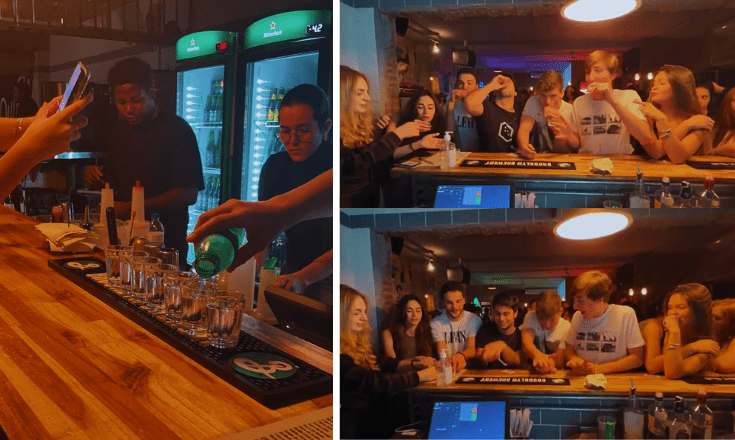
A week later, my friends decided to take me to a second attempt at the American turning-21 ritual, and we went to another restaurant. This time I was prepared and had my official passport in hand, ready to show the world. However, I ordered one of their cocktails, and nobody asked to see anything. When the server brought my drink over, my friends insisted she looked at my ID, and even took a photo of such a coming of age moment. She had forgotten to ID me and wasn’t going to if we hadn’t jokingly asked. That made me realize maybe things aren’t so strict after all in the U.S., or perhaps I was just looking old enough that day for some reason. It definitely reminded me that people are people, and human behavior varies even within the same culture, within the same city.
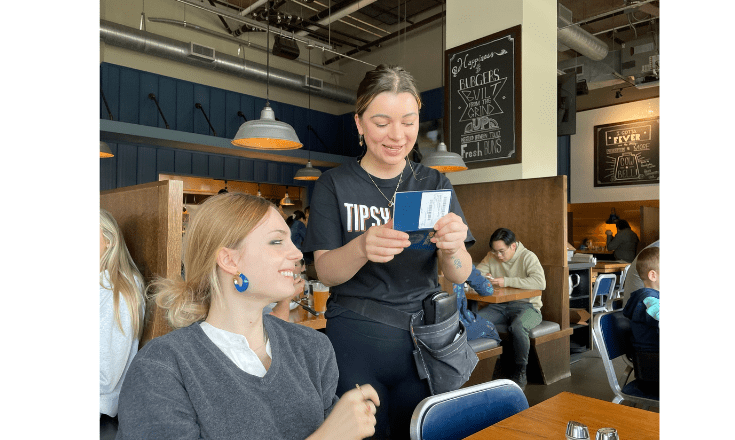
In contrast, when I turned 18 in Brazil, my friends and I went out to clubs, restaurants, and bars, and the drinking culture was definitely there. Around that time, a club in town started asking for IDs at the entrance, which of course felt more exciting and exclusive since that wasn’t usual in the area. We went in, had shots together, and sang along to the DJ’s choices of Brazilian funk. Besides that one club in town, and maybe another one in the city of São Paulo, I don’t recall having my ID requested any other time back at home. Even in other countries, such as my trip through Spain two years ago, I was not carded anywhere when having beer, wine, sangría, or even the famous El Madroño €1 shots served in waffle glasses. This experience contributed to my belief that Latin-language countries (Spanish, Portuguese, French, Italian) share a similar informal (and warmer) cultural community sense.
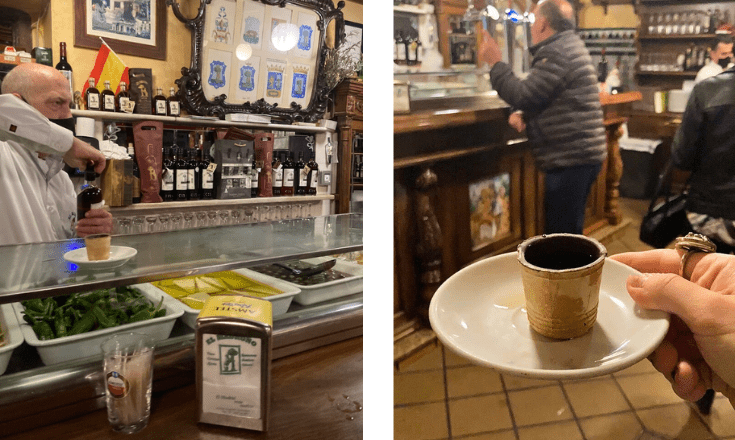
Another shocking comparison is pricing. In American dollars, the shots we took at the club in our small town cost around 60 cents. Cocktail drinks in town varied from $2 to $8. At really nice restaurants or in bigger cities, prices tend to increase, but it will certainly be hard to find an $18 espresso martini, like I had the other day at Belmont Lounge in Capitol Hill. $18 is equivalent to 90 reais, which is nearly 8% of the national minimum monthly wage in Brazil, of 1,320 reais (about $264). A whisky sour I had at a hotel in Brazil cost about $6, while the one I had at Olmstead cost about $17. Of course, this abstraction of direct pricing comparison does not take into account the difference in cost of living between Seattle and my town in Brazil. It does make sense, but I still find it expensive.
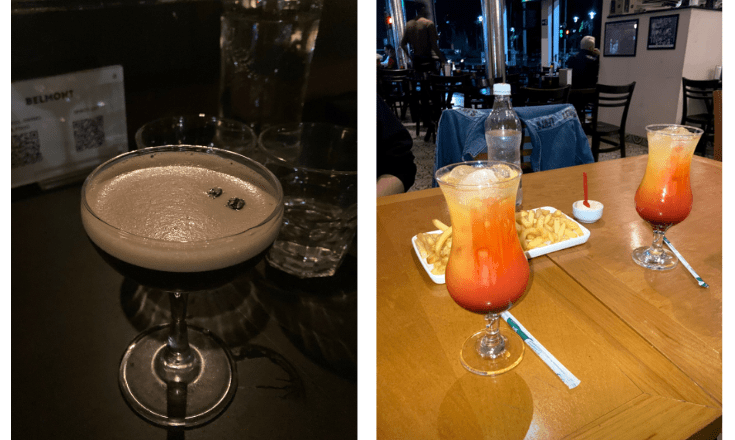
Comparing the cultural differences in regards to welcoming adulthood, I must say that becoming of legal age did feel more special in America. When I moved here, there were formally enforced boundaries I could not cross before being 21. Of course, they all relate to drugs: purchasing and consuming alcohol, tobacco, and marijuana products. Because of this enforcement, these products and establishments gather a sense of exclusivity around them, which promotes a higher appeal for the young public who are excluded from the activities, similar to the concept of exclusive brands and luxury products. According to authors Upshaw, Amyx, and Hardy, “…exclusive products may differ in perceived prestige and pricing levels, they may be quite similar in their appeal on several psychological bases. These might include meeting a need for uniqueness and its accompanying self-enhancement (through meeting a psychological need for independent self-construal)”. I believe the same applies to the appeal surrounding “adult activities.” We may unconsciously believe that by turning 21, or 18, and finally engaging in these activities, we shall suddenly feel integrated into adulthood and its immense freedom, that by being recognized as an adult at a bar and being served a drink, we will finally achieve an increase in self-worth. Different cultures have different ideas of what “adult activities” are, and coming of age rituals are founded upon those ideas.
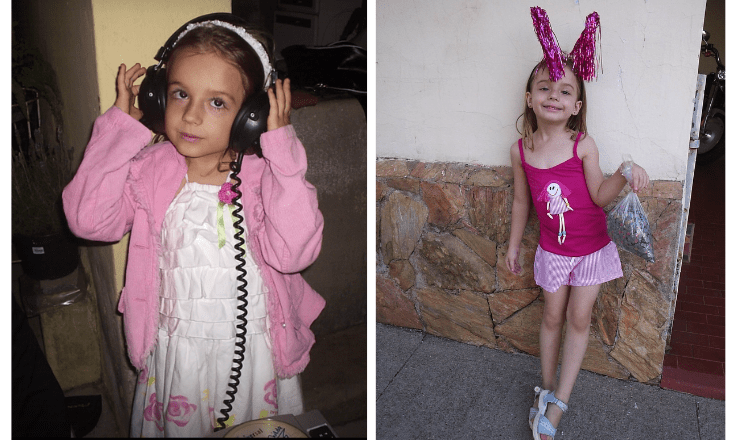
The differences in drinking culture and coming-of-age landmarks I experienced reflect the larger culture of North America and South America. Culture is also intrinsically linked to climate, geography, and language. It is fundamentally bound to the environmental aspects of a community, and to its idiom. The formality, bureaucracy, and reserved personality of the Pacific Northwest go along with its climate, in aspects as simple as the amount of clothes people wear and how establishments are usually closed to the outside world in order to not let the cold and rain in. The informal and warm identity of Brazil mirrors its climate of year-long sunshine and heat, where people wear less clothing, establishments often keep their doors and windows open, and third places extend onto the sidewalks and mingle with the outside world. Even physically, there are less boundaries between people.
In North America, boundaries are more well-defined, and certain situations are more organized. Seattle’s sense of community and fraternity is alive and well, but finding it may be trickier than it is in South America. In Brazil, the sense of fraternity is all around you, but you may notice a lack of efficiency and posture regarding formal situations.
In summary, coming of age rituals are a blend of exclusivity and celebration, marking the transition into adulthood and the integration into a larger and more influential community.
While it may not be accurate to state that reaching a certain age will immediately change one’s life and mind, one’s self-awareness will change as a result of formal changes in their environment, like being allowed to sit at a bar. The truth is that once we reach adulthood, we realize that many of the adults around us have the same questions, uncertainties, and fears that we’ve always had. We slowly understand that all of the adults we looked up to while growing up did not have all the answers, were not always right, and didn’t have everything figured out.

With adulthood comes freedom, with freedom comes power, and with great power comes great responsibility (as Peter Parker’s Uncle Ben taught us all). The start of adulthood continues to be one of the greatest and most celebrated landmarks in one’s life. Like our ancestors, we continue to perceive fundamental lines that separate a child from an adult, and essentially the recognition of one’s freedom and accountability as a human being. Whether you attempt to survive for a year in the wilderness, leave behind childhood amulets, receive scarification marks, or go to a bar and have a Jello shot, celebrating adulthood is important for all cultures and reflects the charming spectrum of human behavior.
Author

Sophia is an internationally published author with her book Primeira Pessoa, as well as a young classical singer. Born and raised in Brazil, she believes the greatest role of a writer is to bring forth the truth, the honesty, and the humanity that echoes within each one of us.

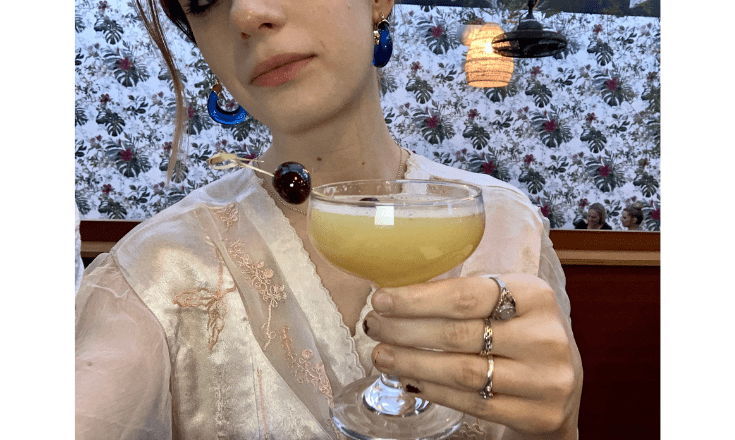










welcome, paramount blog on blubbery loss. parallel helped.